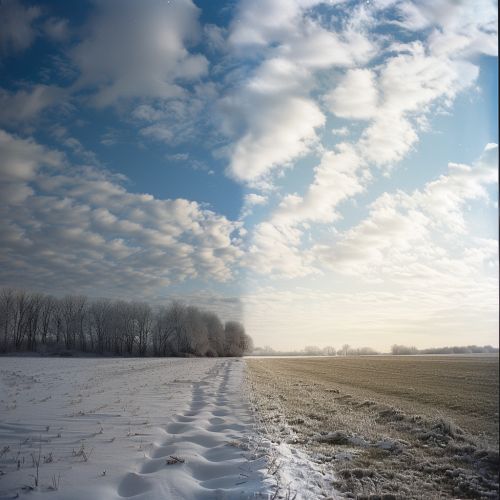Weather front
Introduction
A weather front is a boundary separating two masses of air of different densities, and is the principal cause of meteorological phenomena. In surface weather analyses, fronts are depicted using various colored lines and symbols, depending on the type of front. The air masses separated by a front usually differ in temperature and humidity.
Classification
Weather fronts are classified into four types: cold fronts, warm fronts, stationary fronts and occluded fronts.
Cold Front
A cold front is defined as the transition zone where a cold air mass is replacing a warmer air mass. Cold fronts generally move from northwest to southeast. The air behind a cold front is noticeably colder and drier than the air ahead of it. When a cold front passes through, temperatures can drop more than 15 degrees within the first hour.
Warm Front
A warm front is defined as the transition zone where a warm air mass is replacing a cold air mass. Warm fronts generally move from southwest to northeast. The air behind a warm front is noticeably warmer and more humid than the air ahead of it.
Stationary Front
A stationary front is a pair of air masses, neither of which is strong enough to replace the other. They remain essentially in the same area for an extended period of time. A wide variety of weather can be found along a stationary front, but usually clouds and prolonged precipitation are found there.
Occluded Front
An occluded front (also called an occlusion) is formed during the process of cyclogenesis when a cold front overtakes a warm front. When this occurs, the warm air is separated (or occluded) from the cyclone center at the Earth's surface.
Formation
The formation of a front, also known as frontogenesis, is the result of horizontal and vertical temperature gradients. Fronts can also be formed by the collision of two different air masses, where the warmer air is forced above the cooler air. This process is known as overrunning.
Weather Changes
Weather changes associated with fronts can range from a line of thunderstorms with a cold front, to clouds and precipitation with a warm front, to minimal changes with a stationary front. The type of weather experienced is dependent on the type of front and the time of year.
Effects on Air Quality
Weather fronts can have significant effects on air quality. For example, a cold front can lift warm air causing the formation of clouds and possibly precipitation. This process can remove or wash out pollutants from a region, improving air quality.
See Also


